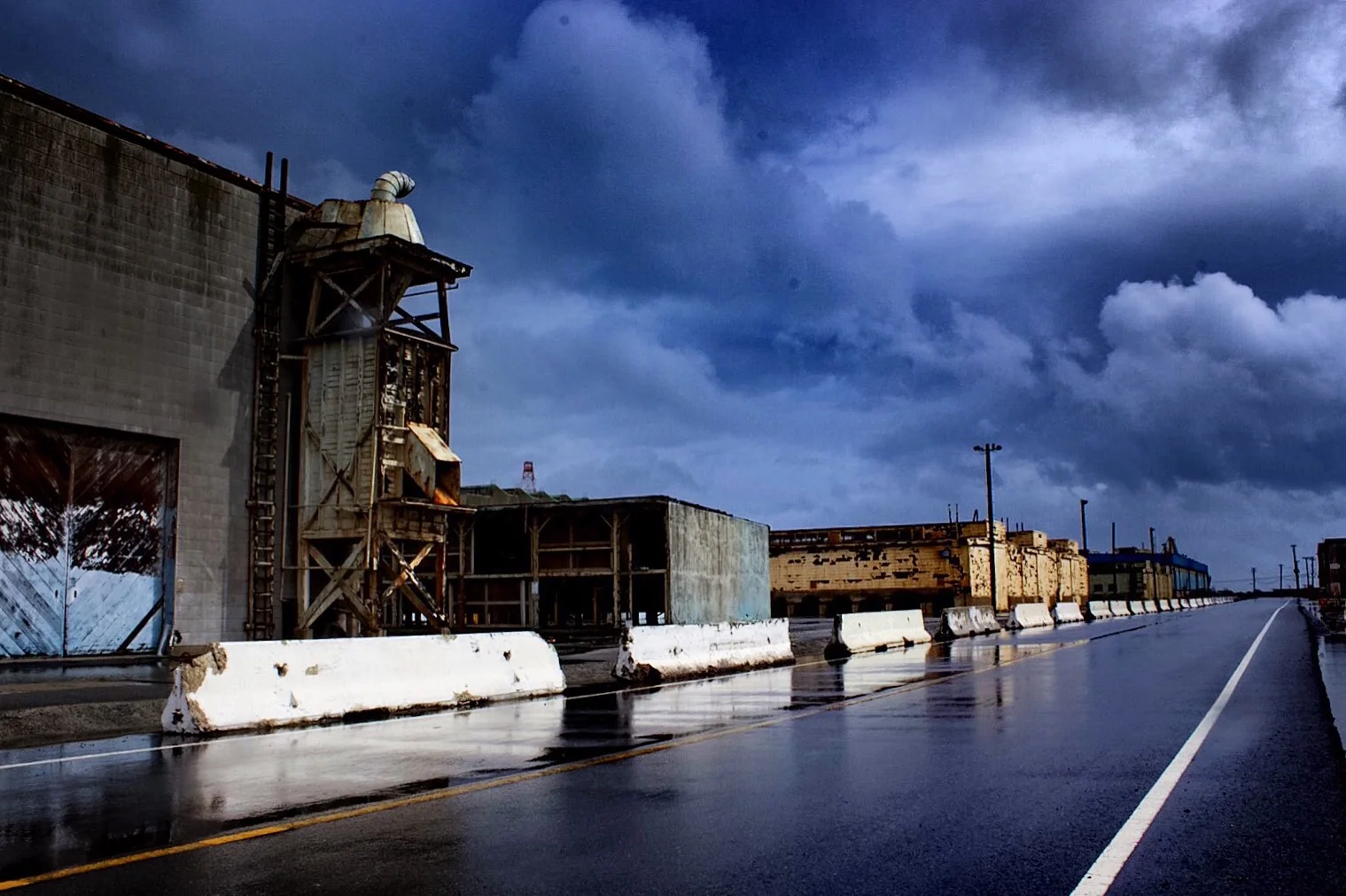






















Your Custom Text Here
Hunter's Point Naval Shipyard is a 638 Acre piece of land located on the southern waterfront of San Francisco. Prior to European settlement, it is believed that the Ohlone People inhabited Hunter's Point.
The shipyard was a private, commercial dry dock facility until December 29, 1939, when it was purchased by the Navy to become a WWII Naval Shipyard.
From 1945 until 1974, the Navy used the shipyard as a submarine and ship repair facility. At the peak of operations, 8,000 people were employed at the shipyard.
The shipyard was also home to the Naval Radiological Defense Laboratory (NRDL), who oversaw the radiological decontamination of ships exposed to atomic weapons testing. The NRDL also conducted experiments on the effect of radiation on living organisms.
In 1974, the Navy ceased shipyard operations, and the shipyard operated as a commercial ship repair yard from 1976 until it's closure in 1986.
The shipyard is now a Superfund site, requiring extensive cleanup due to it's toxic past. As the cleanup takes place, Hunter's Point Shipyard will be demolished and turned over to the city of San Francisco for redevelopment.
I have set out to document this barren, beautiful piece of history before it is gone.
Hunter's Point Naval Shipyard is a 638 Acre piece of land located on the southern waterfront of San Francisco. Prior to European settlement, it is believed that the Ohlone People inhabited Hunter's Point.
The shipyard was a private, commercial dry dock facility until December 29, 1939, when it was purchased by the Navy to become a WWII Naval Shipyard.
From 1945 until 1974, the Navy used the shipyard as a submarine and ship repair facility. At the peak of operations, 8,000 people were employed at the shipyard.
The shipyard was also home to the Naval Radiological Defense Laboratory (NRDL), who oversaw the radiological decontamination of ships exposed to atomic weapons testing. The NRDL also conducted experiments on the effect of radiation on living organisms.
In 1974, the Navy ceased shipyard operations, and the shipyard operated as a commercial ship repair yard from 1976 until it's closure in 1986.
The shipyard is now a Superfund site, requiring extensive cleanup due to it's toxic past. As the cleanup takes place, Hunter's Point Shipyard will be demolished and turned over to the city of San Francisco for redevelopment.
I have set out to document this barren, beautiful piece of history before it is gone.
Building 411
Steel shop, ship repair shop, cafeteria, and Radiographic testing facility.
Building 253
Weapons and Ship Part storage. Stored highly radioactive parts from the USS Independence upon its return from nuclear weapons testing at Bikini Atoll.
Gantry Crane
This gantry crane was used to load the USS Indianapolis with the components of "Little Boy", the first atomic bomb dropped on Japan.
Gantry Crane, Radiation Warning
Fences with radiation warning signs surround the gantry crane and dry dock. Radiation levels remain higher in this area as the dry dock was used to decontaminate ships returning from Japan and from atomic bomb testing at Bikini Atoll.
Building 411 Interior
Inside flooded building 411, the former steel shop, ship repair shop, cafeteria and Radiographic testing facility.
Building 411, Recycling Bin
Steel shop, ship repair shop, cafeteria, and radiographic testing unit, recycling bin.
Building 600
Standing alone on the southern shore of the shipyard; Bachelor Enlisted Quarters, E.M. Barracks.
Dry Dock 2
Docked numerous WWII ships and aircraft carriers and was used for the nuclear decontamination of ships from "Operation Crossroads".
Building 808, Red Winged Blackbird
WWII industrial storage building, Red Winged Blackbird. Nature has begun to reclaim the industrial landscape. Common fauna include Coyotes, Black Tailed Hare and Canadian Geese.
Building 405
WWII Supply store house.
Wooden Crates, Building 405
One of many rows of wooden crates, Building 405.
Building 813, Second Floor
Disaster control center. A source device leaking strontium-90 was found in the basement.
Building 813, Third Floor.
Eastern Boundary, Parcel G
Eastern side of Building 411, Building 409, the welder motor generator, and 450 ton Gantry Crane.
Gun Mole Pier and Gantry Crane
Used in WWII to decontaminate aircraft and battleships returning from nuclear warfare in Japan and The Philippines
Basketball Hoop, Parcel D-2
Long abandoned basketball court, Parcel D-2.
Small Crane, Parcel E.
Small crane over the landfill disposal trenches and salvage yard, on highly toxic Parcel E.
Railroad Tracks, Parcel E
Grass reclaims abandoned railroad tracks on highly toxic Parcel E.
Building 366
Chemical research lab and Naval Radiological Defense Laboratory (NRDL) workshop.
Parcel G
Southern Boundary of Parcel G, lined with warehouses and WWII supply and weapons storehouses.
Building 351
Naval Radiological Defense Laboratory testing unit, Chemical Techncial Development lab. Signs on the doors warn of Asbestos.
Building 415
Rusted Stag grazing outside an abandoned WWII Supply Storehouse.
Eastern Waterfront, Parcel C
Calm Eastern Waterfront and railroad tracks at sundown, Parcel C.